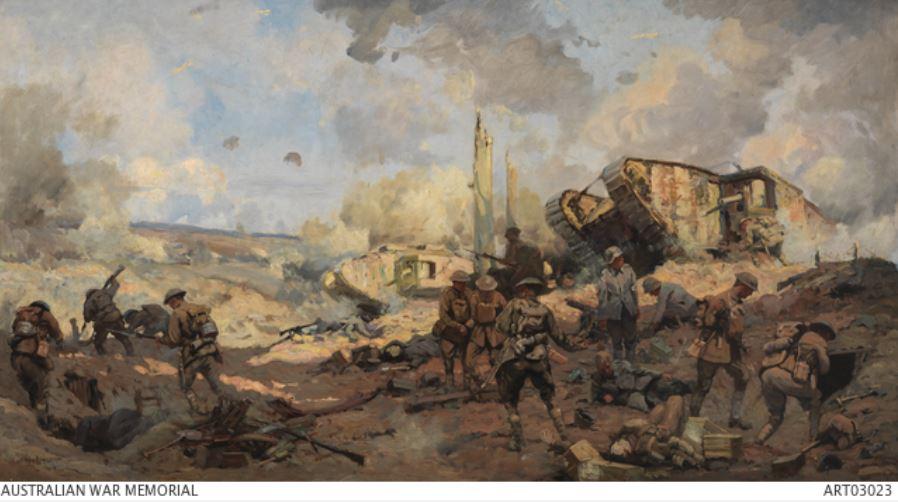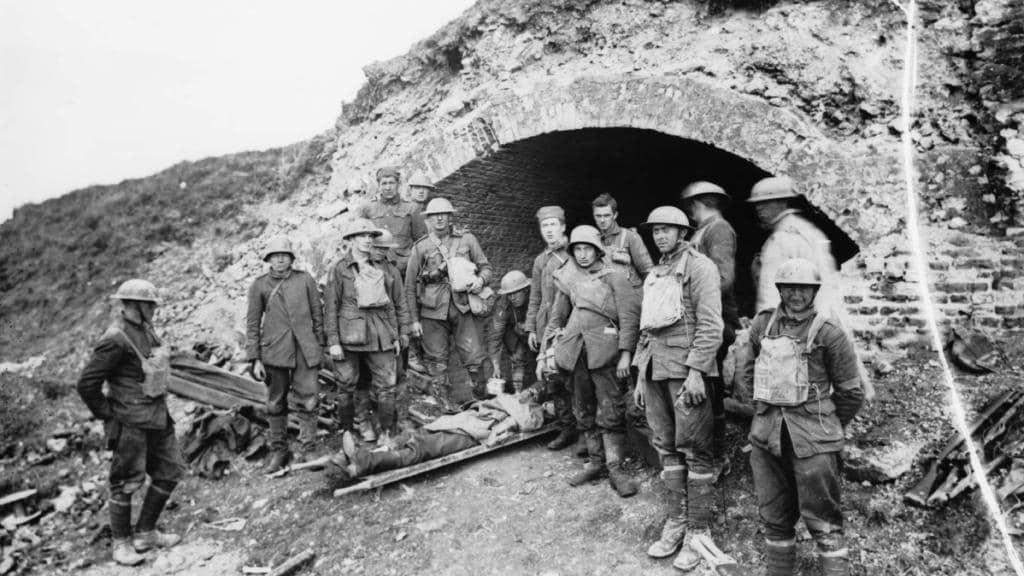After the capture of Mont St Quentin and Péronne in early September, Lieutenant General Monash kept his Australian Corps on the offensive despite decreasing numbers in units due to mounting casualties and the need for rest. By 18 September the Germans had fallen back to their main, in-depth defensive line, the Hindenburg Line which ran parallel to the St Quentin Canal. At this time Australian efforts were supplemented by troops from the Second American Corps which allowed the advance to continue. A successful attack on the main Hindenburg Line positions occurred on 29 September. The final attacks by Australian infantry units occurred at the village of Montbrehain, which was part of the deep defensive system known as the Beaurevoir Line. The initial assault was made by the 5th Brigade (NSW) who were held up by stiff German resistance. The attack was then taken over by the 6th Brigade (Vic) who finally captured Montbrehain on the morning of 5 October 1918 at the cost of 430 casualties. This village was the most westerly point reached by AIF troops on the Western Front. After this battle, all the divisions of the Australian Corps were withdrawn for rest and reorganisation. They were not in the front line when the Armistice was declared, but other specialist Australian units such as engineers, heavy artillery and aviation personnel were still in action right up until the Armistice on 11 November 1918 an agreement that saw the end of all fighting on land, sea and air between the Allies and Germany.
Hindenburg Line
This listing refers to operations carried out by the Australian Corps to breach the final German defensive line in its allocated sector between September and early October 1918.



